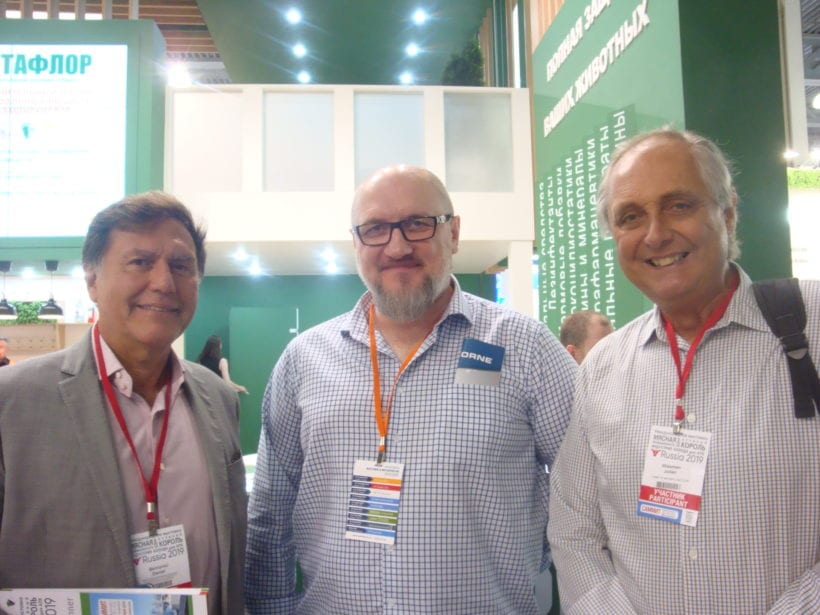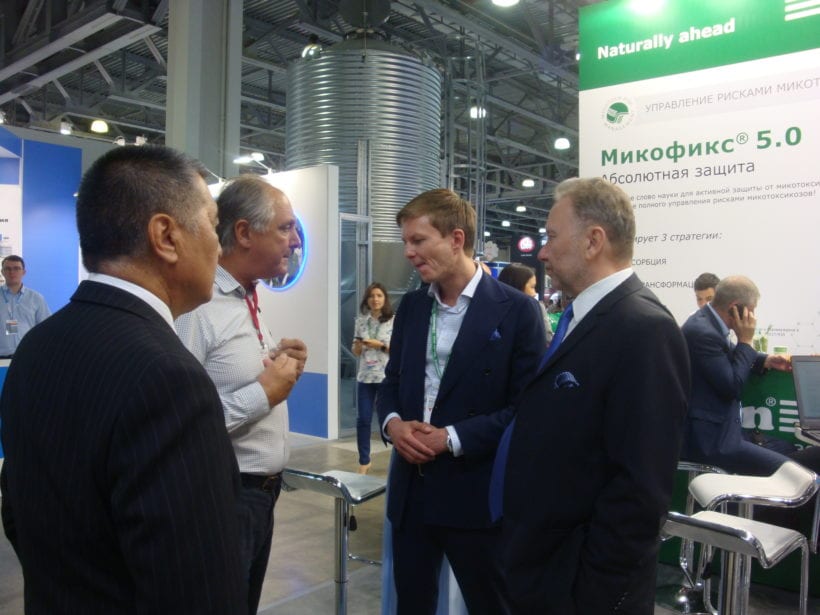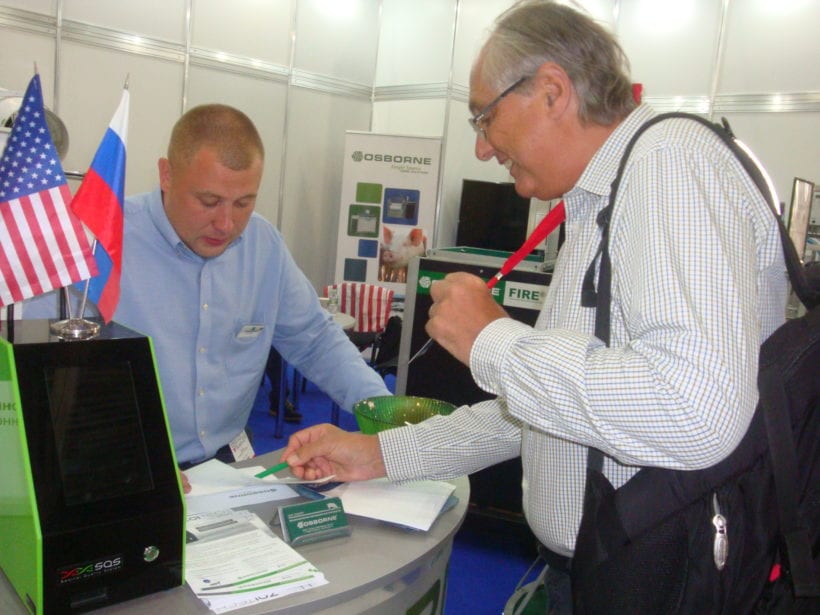USSEC Participates in Meat and Poultry Event in Russia
- Category:
- Animal Utilization
- General News
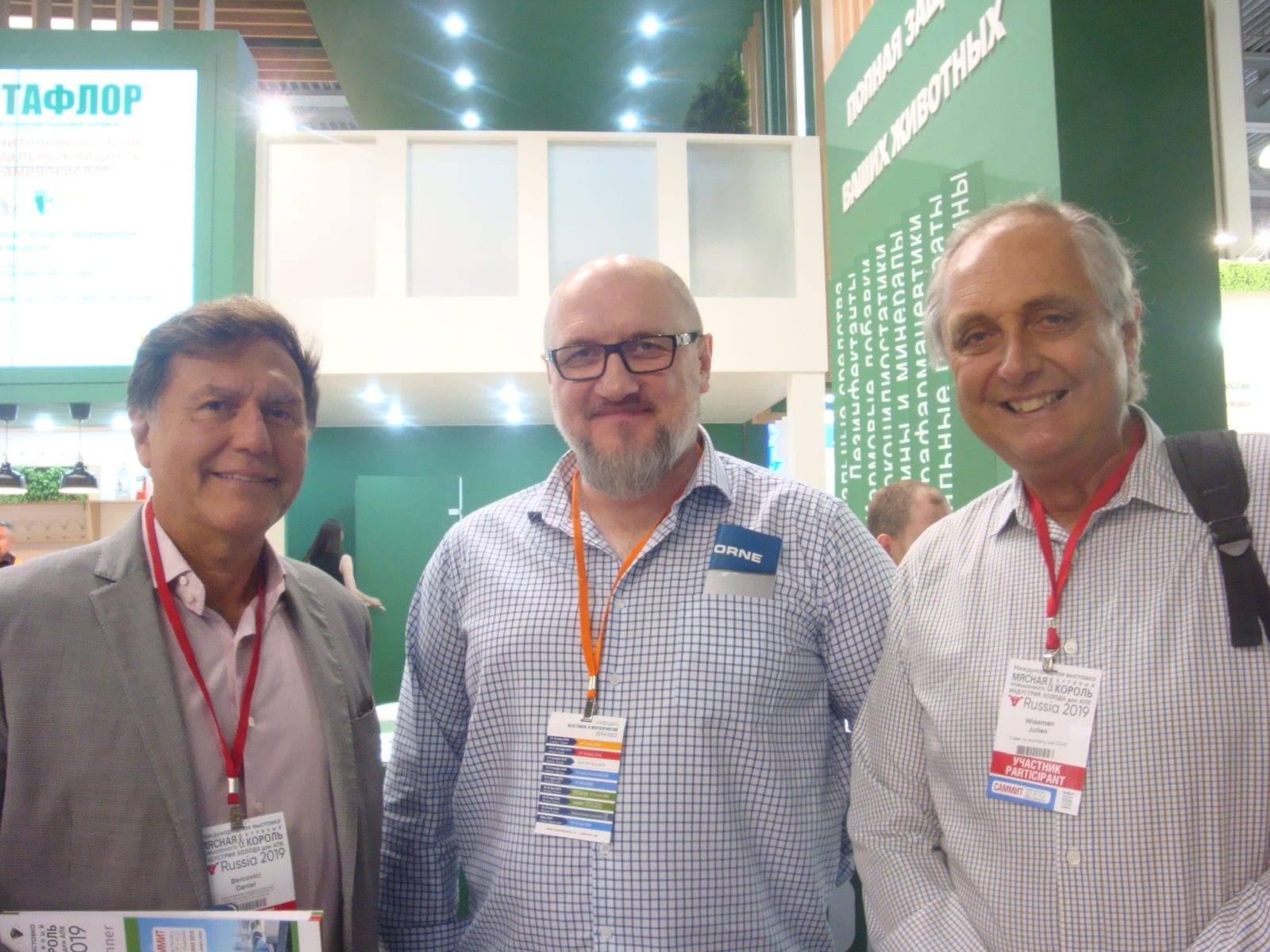
The Meat & Poultry Industry Russia / Сhicken King Trade Show is an important industry platform organized in late May in Moscow, Russia, to demonstrate the most advanced developments in the field of manufacturing of high quality meat and feed products, featuring topics from equipment and technologies for growing and keeping farm animals to feeds and feed additives production and processing of raw materials. The world's leading companies and experts in the field of animal husbandry, poultry and pig breeding, feed production and animal health exhibited at the Expo.
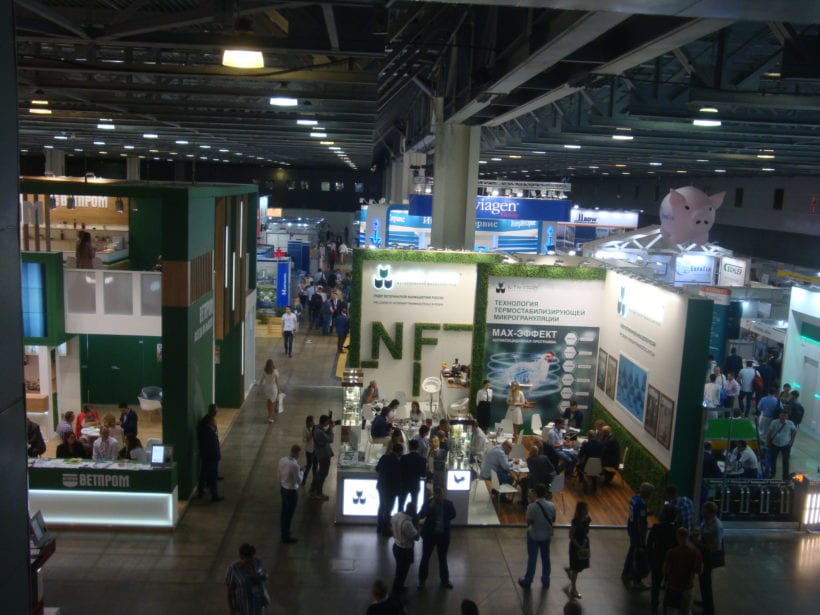
According to a recent United Nations report, the global population will reach 9.7 billion people in the next 30 years, consequently leading to the growth of demand in proteins. However, in order to be able to feed the growing population of the planet, there is an urgent need to develop more environmentally friendly, reasonable solutions that will at the same time allow the continuation of the production of relatively affordable and high-quality protein required for nutrition, without causing climatic, environmental and economic problems.
The production of plant and animal proteins in Russia is developing similarly to the global trends. Today Russia is the fourth largest meat producer in the world. Thus, the output of meat from livestock and poultry for slaughter has grown by nearly one-third over the last seven years – reaching 14.9 million tonnes in live weight basis. According to estimates, this volume will grow by more than 1.5 million tonnes by 2024. High-quality feeds are required in order to obtain high-quality animal protein. According to the Alltech survey, Russian production of compound feed reached 39.2 million tonnes in 2018, not meeting the country’s demand of 42 million tonnes. By 2025, feed demand will increase to 60 million tonnes. Only two-thirds of the required feed output could be satisfied by domestic production - both now and in six years.
How could the problem of feed protein deficiency be solved? What raw materials could be used for the production of protein feeds? What is the role of soy in feed protein supply? What can improve the quality of the feed base, which serves as the basis for the production of proteins? What are the prospects for obtaining high-protein crops in the crop production for feed and food protein? How to follow biosecurity and sustainability protocols? These and many other related issues were discussed at the Summit held on May 28 and 29, organized at the Meat & Poultry Industry Russia / Сhicken King Trade Fair at the Crocus Expo International Exhibition Center in Moscow hosted by the ASTI Group, a company with 18 years of experience of exhibition promoting activities and partnering with the largest Western exhibition venues, including the Dutch VIV partnership dating back years.
One of the key events of the Summit was a session titled "Safety And Product Quality: Production Of Animal And Vegetable Origin Proteins, Fodder Base" that gathered leading Russian and foreign experts in animal production, scientists, representatives of fodders and protein products manufacturing companies. USSEC consultants Dr. Julian Wiseman, Professor of Animal Production University of Nottingham, UK and Dr. Maria Domoroshchenkova, Russia country representative, attended the event. At the invitation of the Summit organizers, Professor Wiseman submitted a lecture compiled from two parts: “Alternative Protein Sources For Non-Ruminants” and “Benefits Of Soya Protein Meals As A Raw Material In Non-Ruminant Diets.” A higher quality of soy protein versus other alternative protein sources and the benefits of U.S. soybean meal versus soybean meals of other origins were clearly demonstrated during the presentation and during the following meetings and discussions with local customers.
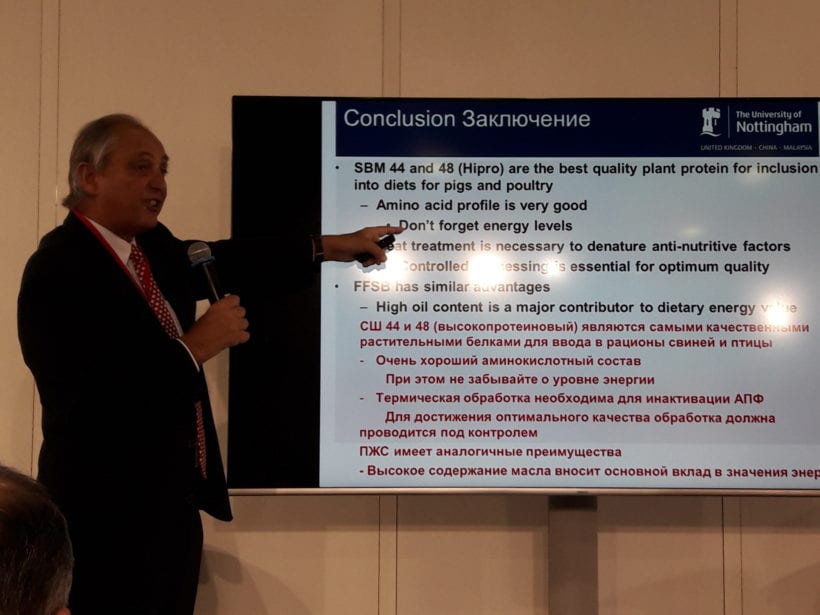
The USSEC presentation at the Summit was well attended with about 70 attendees, primarily from the Russian agricultural sector and foreign experts including key representatives from poultry, swine, and feed industries; feed utilizers; representatives of science; representatives of the legislative branch; analysts; investors; entrepreneurs; and top managers working in the agro-industry and journalists. Dr. Domoroshchenkova said that USSEC’s attending the Summit and the Trade Fair offered a good opportunity to network with participants and to position U.S. soy products within the entire range of livestock feed products.
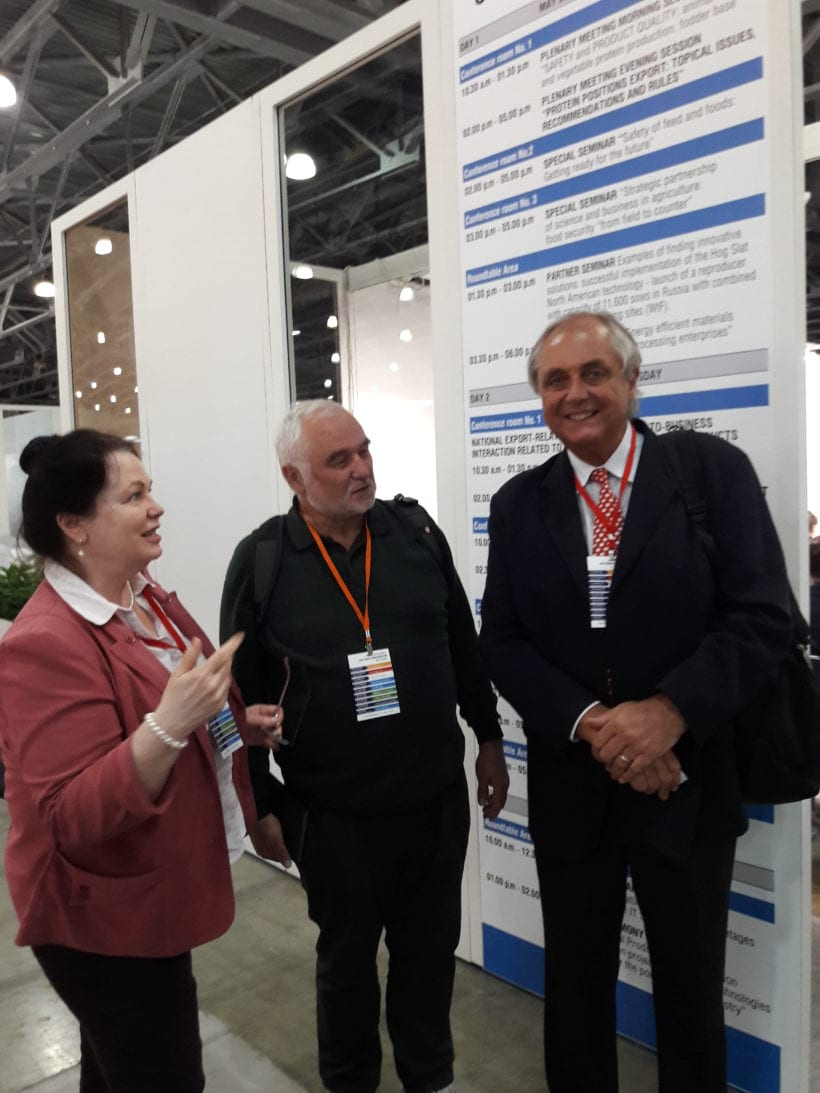
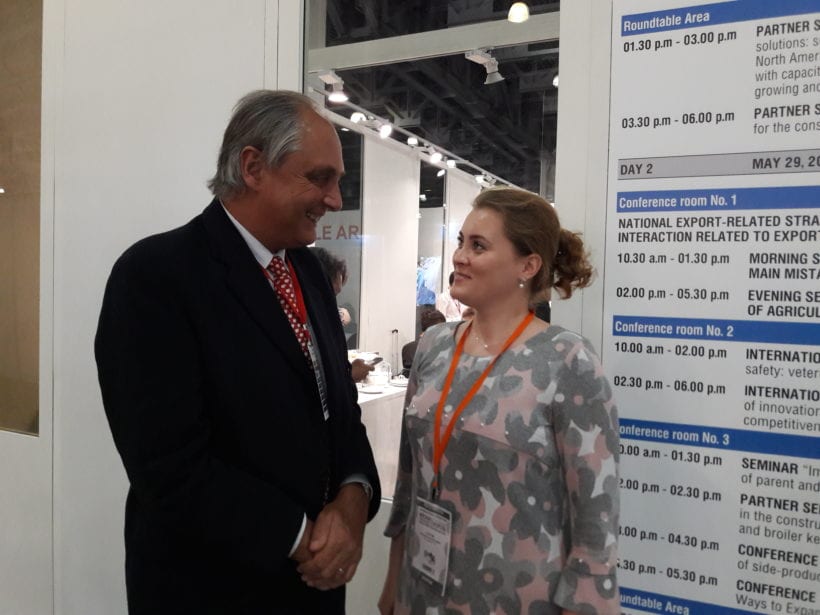
Visiting the Trade Fair allowed the USSEC consultants to meet with key players of the Russian feed and livestock industries. They had a roundtable discussion on the current situation with poultry industry development in Russia and neighboring countries with Dr. Sergey Shabaev, the Chairman of the Euroasian Poultry Association, which unites poultry farmers from Russia and other Commonwealth of Independent States (CIS) countries such as Belarus, Kazakhstan, Armenia, Azerbaijan, Kyrgyzstan, Moldova, Tajikistan, and Ukraine. Poultry meat and egg production in CIS countries varies widely, with Russia producing the largest volumes of poultry meat (5 million tonnes in slaughtered weight) and eggs (44.9 billion) and with leading positions of Belarus in per capita annual production of poultry meat – 66 kg and eggs – 389 pieces. On the other side, are Kyrgyzstan and Tajikistan and with a very poor development of their poultry industries with extremely low levels of per capita annual production of poultry meat as low as 0.12 kg and 4.0 kg and of eggs - 85 and 50 pieces respectively.
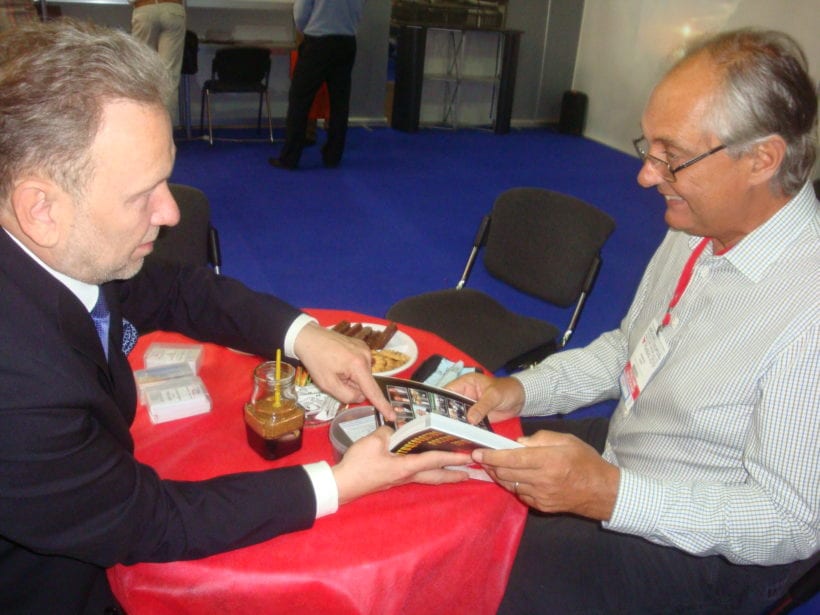
During the Trade Fair, the USSEC consultants had interesting meetings with a number of Russian and international feed associations, equipment vendors, local soy processors, and feed additives and vet preparations suppliers. USSEC participation at such industry events is increasing the exposure of U.S. soy and offers the opportunity to increase awareness among Russian feed and livestock industry stakeholders about U.S. soy attributes, availability and technical support package delivered by USSEC to end users and crushers around the world. The Russian livestock and feed industries represent a significant part of the global livestock sector and compound feed production, a large potential export market for U.S. Soy.
